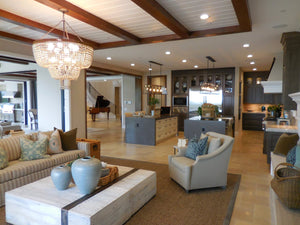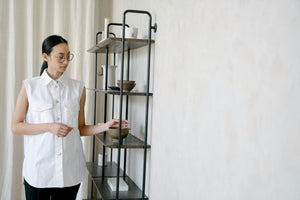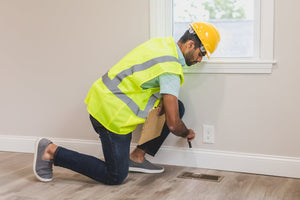Staging While You Transition: How to Manage Two Spaces at Once

Staging While You Transition: How to Manage Two Spaces at Once - Learn practical tips for staging while you transition, manage two homes with ease, and keep your spaces functional, clean, and ready to sell.
Managing two homes at the same time is exhausting unless you have a clear plan. Whether you're preparing your current home for sale or settling into a new one, trying to keep both organized can leave you feeling scattered. You're packing, cleaning, planning, and coordinating constantly. Staging while you transition involves more than just moving furniture. It requires steady focus, practical planning, and smart use of your resources.
Understand the Unique Demands of Managing Two Homes
Juggling two properties means every task multiplies. You’re paying utilities, scheduling maintenance, and organizing spaces for different purposes. It’s easy to get caught up in comparing one home to the other, but it helps to treat each as its own project.
Assign separate calendars for each address. Plan visits, cleanings, and showings ahead of time. Don’t assume things will fall into place without structure. You’re dealing with double the effort and time. It’s okay to outsource parts of the process early rather than waiting until you feel overwhelmed.
Emotionally, the strain is real, too. One home might hold memories, while the other represents change. It’s important to give yourself space to adjust without letting those feelings interrupt the process.
Make a Plan for Staging While You Transition
Create a working timeline from day one. Decide which areas to stage first. List which furniture stays and which goes. Avoid trying to do it all in one weekend. Moving things in phases gives you time to evaluate what’s working in each space.
Start with common areas—living room, kitchen, and primary bedroom. These spaces make the biggest impression on buyers. Neutral tones, minimal decorations, and balanced lighting will help the home feel ready. Don’t forget closets—buyers check them.
Next, pack up highly personal items like family portraits, awards, or niche collections. These can distract from the layout and feel of the home. Group similar items together in bins to speed up packing and locating them later.
If you’re using movers, they can handle bulky pieces or fragile items safely. This is helpful if you're unpacking your new home while still staging the old one. You save time, reduce stress, and avoid injury, especially with large items. Movers also allow you to focus on design choices instead of logistics.
Streamline Your Inventory with Strategic Decluttering
Before you can make anything look polished, cut out what’s unnecessary. This reduces visual clutter and also lightens your load for the eventual move.
Go through your things by category—clothing, books, kitchenware. Avoid jumping between rooms. Focusing on one group makes decisions easier. If you haven’t used something in six months, you probably won’t miss it.
Set up three zones: keep, donate, and discard. Be honest about what will actually serve a purpose. You don’t want to fill your new home with items that don’t belong. Importantly, label boxes clearly. When you're staging while you transition, clutter can ruin a buyer’s first impression—so reduce what’s out in the open. A spacious look adds perceived value. Every room should feel clean, open, and balanced.
Maximize Visual Appeal in the Home You're Leaving
Buyers judge the home by what they see, not by how you feel about it. That’s why visual appeal matters more than personal style. For starters, clear out bold wall colors, posters, or any furniture that doesn’t match the home’s layout. Stick to neutral tones—white, beige, soft gray. These shades reflect light and make rooms feel larger.
Second, clean every corner. That includes baseboards, light switches, window sills, and under furniture. Replace light bulbs with soft white or daylight options. Open the blinds fully to bring in natural light.
Mirrors make small spaces feel wider. A large mirror in the entry or hallway is an easy trick. Keep décor minimal—a single plant, a framed print, or a throw pillow can add style without clutter. Use consistent textures and colors throughout the home. This helps buyers see it as a whole, not as disjointed parts.
Maintain Functionality in the Home You’re Still Living In
Living in a staged home feels awkward at first. You’re trying to keep things perfect, but life still happens. Create systems that help you tidy quickly without extra effort. Store off-season clothing and extra supplies offsite. This frees up closet space, which buyers always notice. Choose double-purpose furniture—a bench with hidden storage or a coffee table with shelves.
Avoid overcrowding counters. For instance, bathrooms should have one or two items visible at most, and kitchens should be clean and organized. Hide dish racks, magnets, and personal calendars.
Do small resets daily. Wipe down counters, empty trash cans, and straighten furniture before leaving the house. This keeps you prepared for last-minute showings without panic. Set aside a basket where you can toss personal items before a showing. Think chargers, wallets, and snacks. One quick sweep, and you’re good to go.
Stay Emotionally Grounded Throughout the Process
Managing two homes isn’t just physical—it wears on your mindset, too. It’s okay to feel disoriented, especially when neither space feels complete. Build simple habits to stay grounded. Use the same coffee mug in both homes. Bring the same blanket or pillow between them. Consistency helps you feel settled even when things around you change.
Avoid rushing decisions. You don’t need to redecorate both homes at once. You’re allowed to take your time. Not everything needs to be fixed or perfect. Talk to someone outside the process. A friend or partner can give you perspective when things feel chaotic. Sometimes, all you need is to step back and look at the bigger picture.
Above all, take care of yourself—eat properly, sleep enough, and spend a few minutes outside when possible. Even short breaks help you stay focused. Your goal is to create livable, functional spaces—not to impress anyone or win awards.
Conclusion
Balancing two properties demands structure, effort, and realistic expectations. Once you set priorities and act step by step, the pressure becomes easier to manage. You don’t need to do everything at once. You just need to stay organized, flexible and focused. Staging while you transition means making both homes work at the same time. It’s not easy, but with the right plan and a bit of patience, you’ll get there without losing control.
- Home Staging Warehouse






